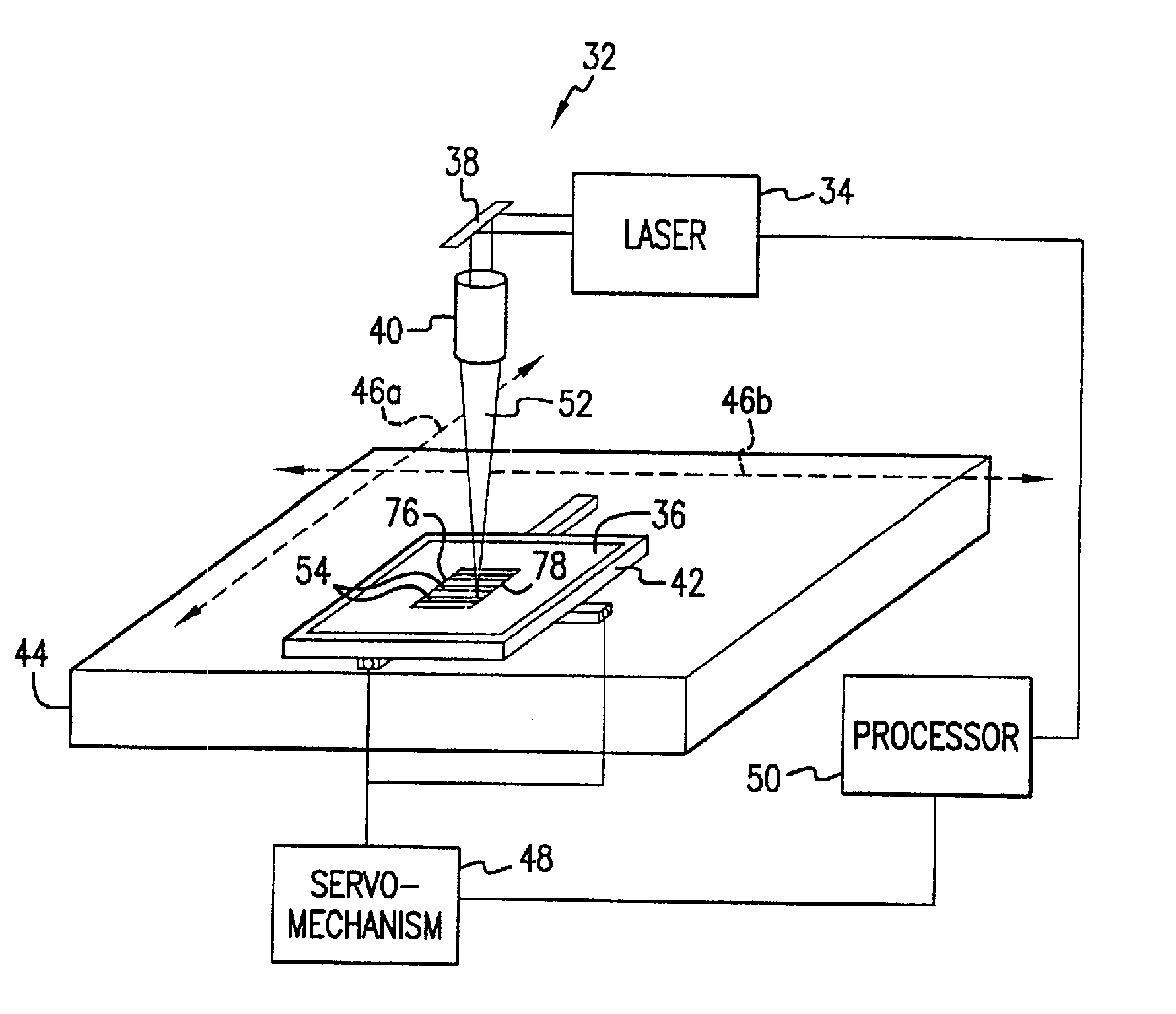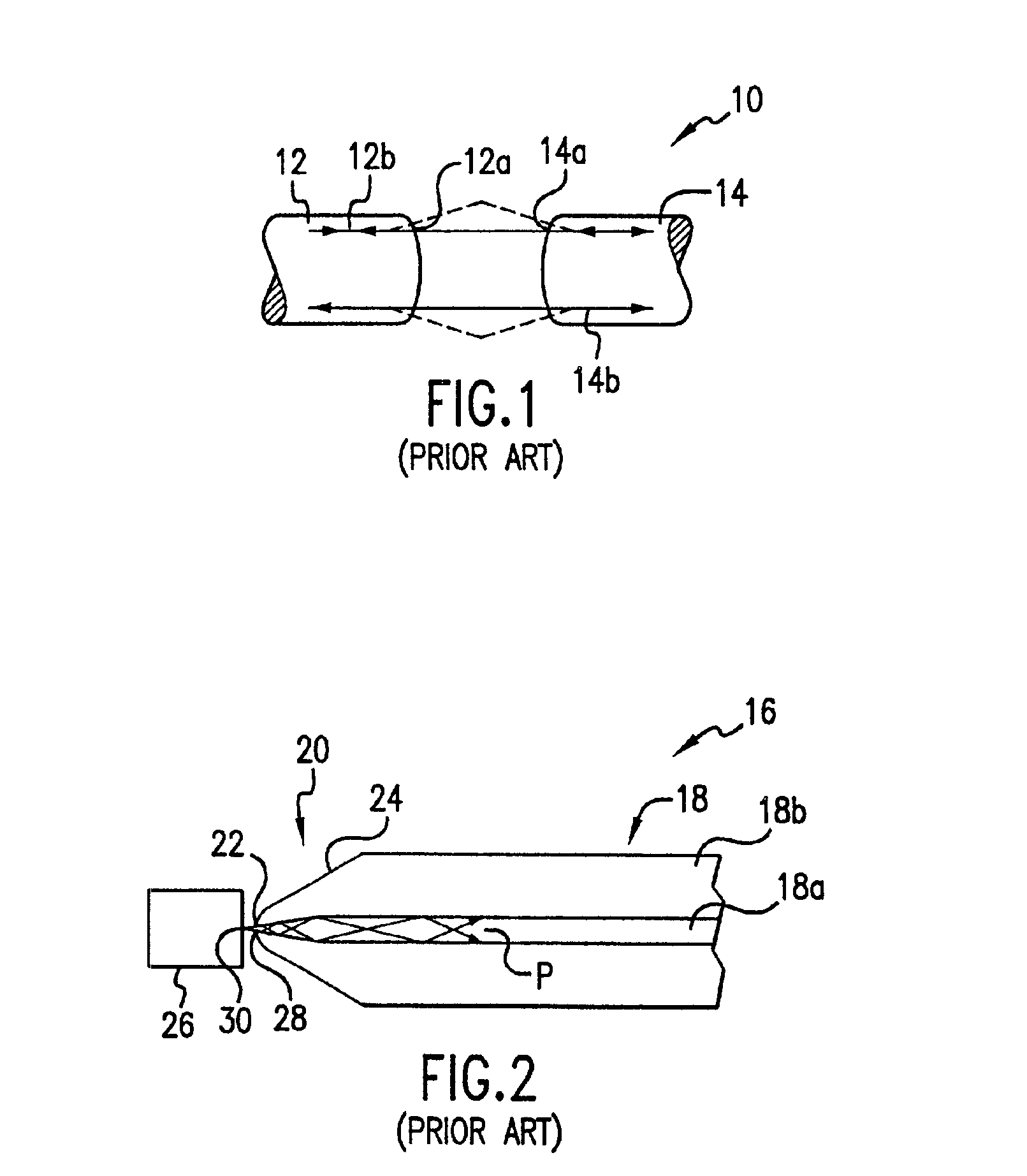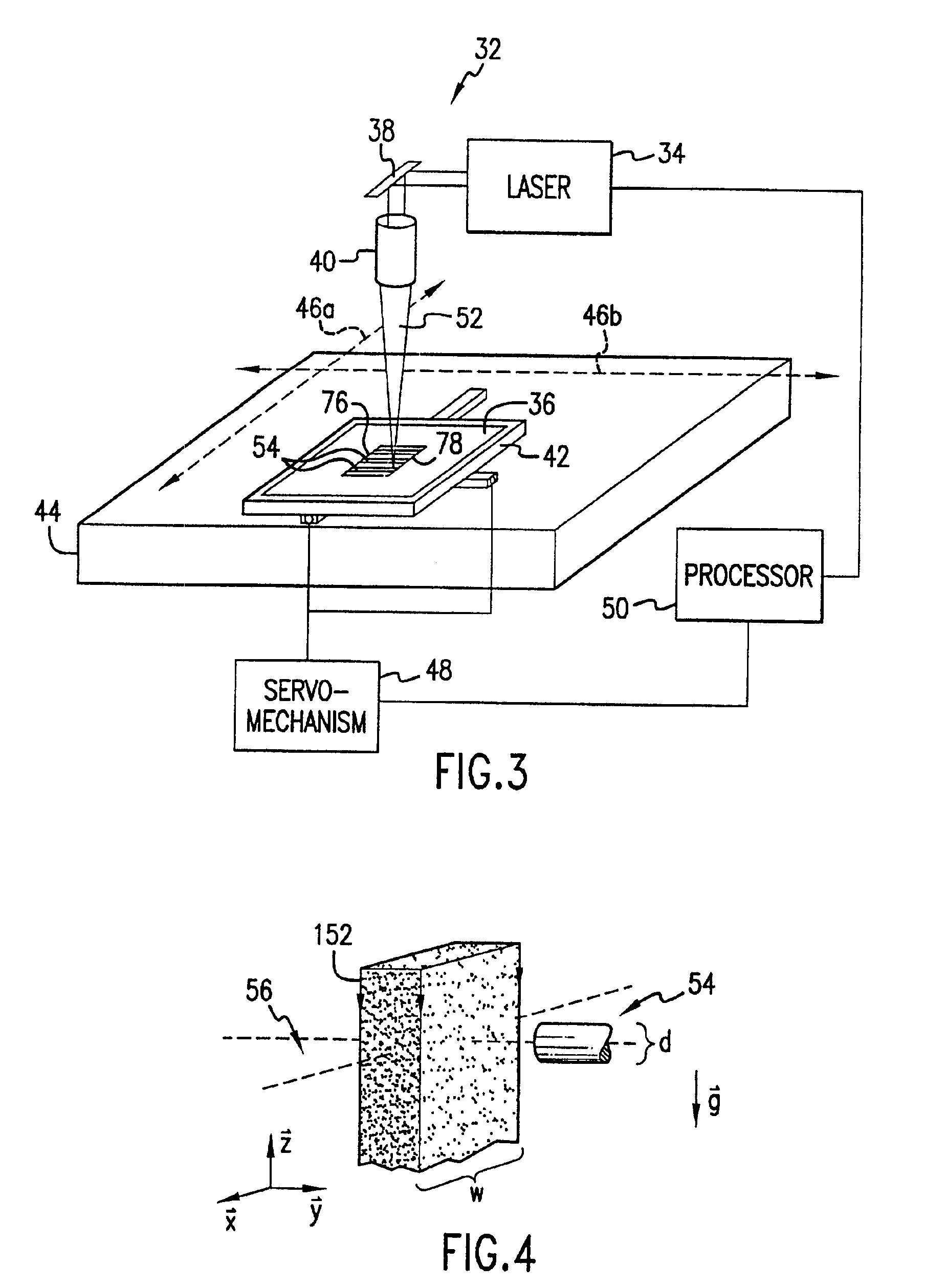System for thermal shaping of optical fibers
a technology of thermal shaping and optical fibers, applied in the field of optical fibers, can solve the problems of loss in connection, inability to form ideal interconnects, and loss of connectors, so as to facilitate sag control, minimize unwanted artifacts, and reduce sag
- Summary
- Abstract
- Description
- Claims
- Application Information
AI Technical Summary
Benefits of technology
Problems solved by technology
Method used
Image
Examples
Embodiment Construction
[0028]Referring to FIG. 3, an exemplary system 32 that is suitable for shaping optical fibers in accordance with the present invention. The system 32 includes a beam source 34 in optical communication with a platen 36 through a pick-off mirror 38 and beam shaping optics 40. The platen 36 is attached to a stage 42 that is moveably attached to a frame 44. Specifically, the stage 42 is moveably attached to the frame 44 to reciprocate along at least one axis 46a. The stage 42 may also be attached to move along an axis orthogonal to axis 46a, shown as 46b. To that end, a servo-mechanism 48, in data communication with a processor 50, is coupled to the stage 42 to facilitate movement along both axes 46a and 46b under control of the processor 24. In this manner, positional control along the axes 46a and 46b was achieved to within 4 μm, with the laser 34 being able to impinge a beam 52 upon any area of the platen 36, desired. In the present example, one or more optical fibers 53 are attached...
PUM
| Property | Measurement | Unit |
|---|---|---|
| Area | aaaaa | aaaaa |
| Energy | aaaaa | aaaaa |
| Reflection | aaaaa | aaaaa |
Abstract
Description
Claims
Application Information
 Login to View More
Login to View More - R&D
- Intellectual Property
- Life Sciences
- Materials
- Tech Scout
- Unparalleled Data Quality
- Higher Quality Content
- 60% Fewer Hallucinations
Browse by: Latest US Patents, China's latest patents, Technical Efficacy Thesaurus, Application Domain, Technology Topic, Popular Technical Reports.
© 2025 PatSnap. All rights reserved.Legal|Privacy policy|Modern Slavery Act Transparency Statement|Sitemap|About US| Contact US: help@patsnap.com



